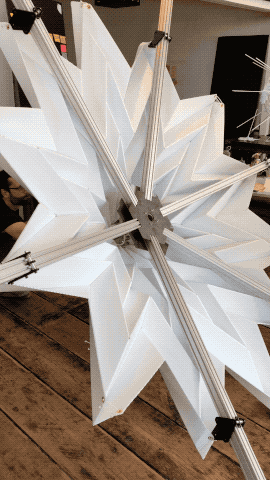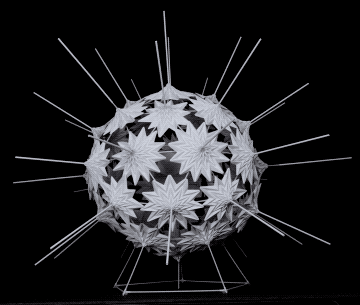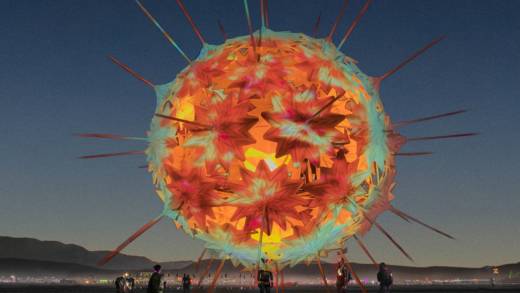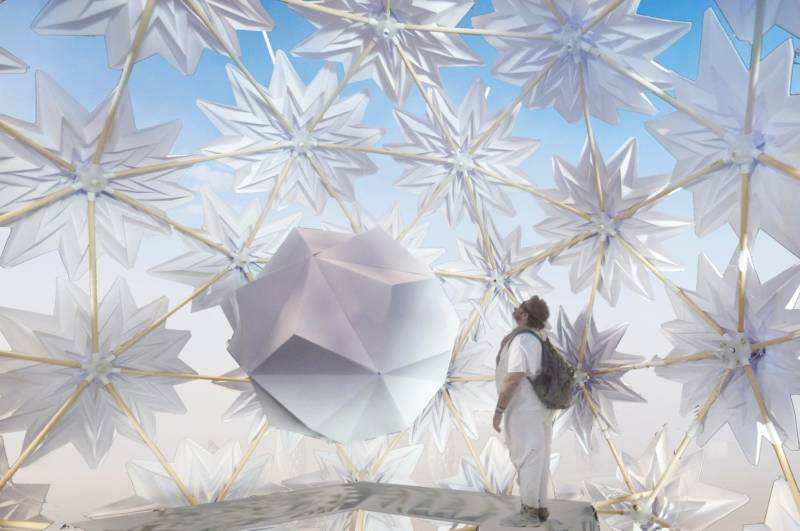Imagine a spiky dandelion puff that’s illuminated from within by an LED light show at night and you have RadiaLumia, a five story-tall geodesic sphere, covered with giant radiant spikes and 42 sensor-driven origami shells that open and close.
Oh that’s right: you don’t have to imagine. You can see it right there. But those panels that look like flowers move. You can see one here:

And here:

“It’s the kind of art that you almost need Burning Man to inspire. It’s so audacious and also whimsical at the same time,” says Jesse Silver, a VP of product at the cannabis company Pax and one of the leaders of an army of roughly fifty volunteers who call themselves FoldHaus.
Who are they? Bay Area designers and engineers — many of them connected to the design firm IDEO. Like Joerg Student, an executive design director and the other FoldHaus lead. “All of our sculptures are somehow inspired by nature. Like, we did flowers [Blumen Lumen], and then we did mushrooms [Shrumen Lumen]. This year, the inspiration comes from this tiny protozoa called radiolaria that floats in the ocean,” Student says.



